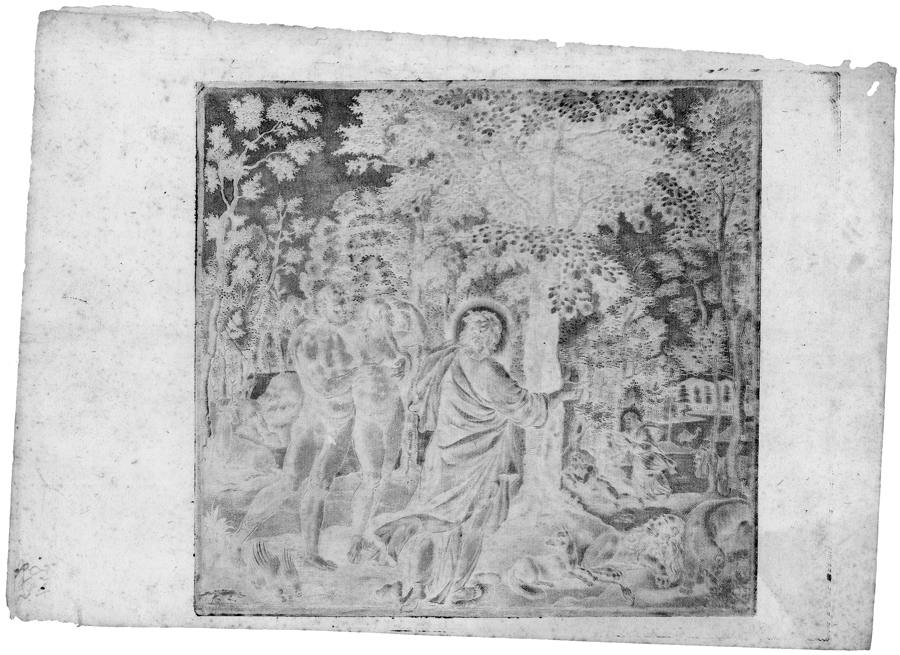Loading the page ...
German School
ca. 1550
Adam and Eve in the Garden of Eden. Stipple engraving and drypoint. 16.1 x 17.2 cm. Watermark: Serpent and countermark Quatrefoil with appended letter M.
This enigmatic print depicts two episodes from the Creation story in artistically concentrated form. On the right, in a paradise landscape in the middle distance, we can make out the birth of Eve. In the foreground God the Father leads the first human couple as they stroll casually to the Tree of Knowledge. The scene is remarkable for its compositional density and narrative richness. Adam and Eve are rendered with Renaissance-style beauty, openly embracing each other, with Adam’s left hand casually clasping Eve’s breast. Around them the beasts of creation repose in peaceful harmony. In the left foreground a lizard scurries past; we see a small winged phantasy creature, a recumbent red deer, a fox next to a lion with a huge mane; there is also an ibex, a camel and, way back on the horizon, a rearing horse. The trees of the Garden of Eden have a lush exuberance, while a small stream gives promise of refreshment and fertility. God the Father, who is shown in rear view, dominates the central axis of the composition and strides towards the tree, which is studded with rosy-cheeked apples and whose luxuriant foliage extends to the upper edge of the image.
The technique employed is also unusual, consisting of a combination of etching and stipple engraving. The practice of using the puncheon on copperplates in order to achieve tonal effects was widely employed in the workshops of mediaeval goldsmiths. The surface of the plate, roughened with ornamental patterns, creates soft transitions and smooth tonal gradations. In our print this method has been applied with great subtlety. The whole surface is covered with a dense network of fine dots and other graphic patterns, producing a soft tonal effect. A kind of scraper was probably used to model the bodies of Adam and Eve and for the folds of the drapery of God the Father, while in some places the outlines of their limbs are more precisely defined with fine dry-point lines. Bright light effects are achieved in certain areas by using the pure paper tone, as can be clearly seen on the tree trunk and in the foliage.
The print probably dates to around 1550. The figure type of Adam and Eve suggests a German origin. The sophisticated technique leads one to suppose that this is the work of an experienced master, possibly an engraver of medals or a gem-cutter. The printing technique used permits only a few impressions; hence the present sheet may be unique.
An excellent impression with full margins. Slight foxing, minor aging, otherwise very well preserved.
